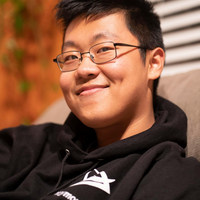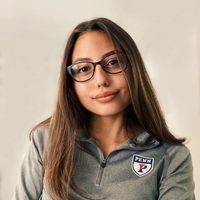Streamlined Analysis for Convoluted Rodent Touchscreen Data by Building a Customized Python Application
Abstract
Touchscreen tests are one of the breakthrough models of measuring cognitive performance, such as pattern separation and cognitive flexibility, in both animal and human experiments. These tests are effective due to their translational nature and standardized data outputs. While touchscreen tests have standardized data outputs, there does not exist an automated process of easily cleaning raw touchscreen data. The data output file can easily contain thousands of rows and columns, which may take researchers weeks to months to completely analyze. Not only does manually analyzing raw touchscreen data take an unnecessary amount of time and resources, but also it will inevitably produce unwanted human errors.
This research explored the question of can Python be used to simplify the touchscreen data analysis process for ABET data. We utilized Pandas, a software library built on top of Python used specifically for data analysis, as the foundation for the project. The DataFrame data structure and other useful functions were also used to extract important parameters from raw data and import them into a presentable comma separated values (CSV) file. The Tkinter package was used to construct a basic graphical user interface with a main menu, multiple sub-menu pages, easy-to-use buttons, and interchangeable criteria materials.
As a result, the application significantly simplified and automated the touchscreen data analysis process for ABET touchscreen data. All the user has to do is click a button based on their desired functionality, locate the directory of the raw touchscreen data, and save the newly created CSV file in another directory. The newly created CSV file contains important parameters such as the percent correct, session duration, and number of trials for the first and second reversal. Additional parameters include the average latencies of reward collections, correct touches, and incorrect touches. The extracted CSV file can then be used to assess performance of tasks using graphing programmings such as Prism.
The creation of a touchscreen data analysis application can transform the efficiency of data analysis within the touchscreen community. The data analysis application can be used across multiple ABET touchscreen tests such as General Touchscreen, Location Discrimination Reversal, Acquisition, and Extinction. Members of the touchscreen community who may not have programming experience can pilot the application and change the criterias to fit their own research. This data analysis application is available on my GitHub (raymon-shi) and may be downloaded and shared to members of the touchscreen community for their personal use.


Comments
Great work!
Very interesting project! I think its easy to underestimate the time commitment of proper data organization, and this will be a big help towards making the research process more efficient.
Open-source
As a college student, I am well aware of the costs associated with access to specific information across any discipline (e.g. costs of textbooks, journal subscriptions, etc). By making your app open-source, you are actively contributing to the advancement of any discipline that uses touchscreen data. This app will make the process of analyzing data much more efficient, and I look forward to seeing its applications in use for many research purposes ahead!